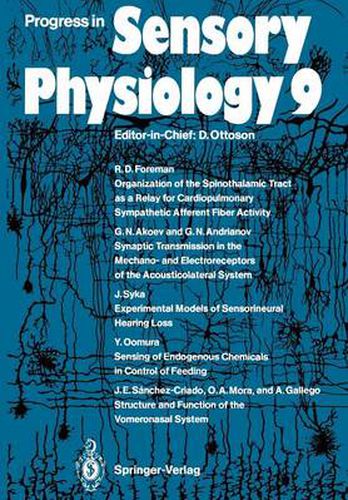Readings Newsletter
Become a Readings Member to make your shopping experience even easier.
Sign in or sign up for free!
You’re not far away from qualifying for FREE standard shipping within Australia
You’ve qualified for FREE standard shipping within Australia
The cart is loading…






This title is printed to order. This book may have been self-published. If so, we cannot guarantee the quality of the content. In the main most books will have gone through the editing process however some may not. We therefore suggest that you be aware of this before ordering this book. If in doubt check either the author or publisher’s details as we are unable to accept any returns unless they are faulty. Please contact us if you have any questions.
Sympathetic afferent fibers originate from a visceral organ, course in the thoracolumbar rami communicantes, have cell bodies located in dorsal root ganglia, and terminate in the gray matter of the spinal cord. Sympathetic afferent fibers from the heart transmit information about noxious stimuli associated with myocardial ischemia, i. e. angina pectoris. Previous reviews have described the characteristics of cardiovascular sympathetic afferent fibers (Bishop et al. 1983; Malliani 1982). This review summarizes that work and focuses on the neural mechanisms underlying the complexities of angina pectoris. In order to understand anginal pain, cells forming the classical pain pathway, the spinothalamic tract (STn, were chosen for study. These cells were chosen to address questions about anginal pain because they transmit nociceptive informa of pain. Antidromic tion to brain regions that are involved in the perception activation of STT cells provided a means of identifying cells involved with trans mission of nociceptive information in anesthetized animals. Other ascending pathways may also transmit nociceptive information, but many studies show that the STT plays an important role. Visceral pain is commonly referred to overlying somatic structures. The pain of angina pectoris can be sensed over a wide area of the thorax: in the retrosternal, precordial anterior thoracic, and anterior cervical regions of the chest; in the left or sometimes even the right shoulder, arm, wrist, or hand; or in the jaw and teeth (Harrison and Reeves 1968).
$9.00 standard shipping within Australia
FREE standard shipping within Australia for orders over $100.00
Express & International shipping calculated at checkout
Stock availability can be subject to change without notice. We recommend calling the shop or contacting our online team to check availability of low stock items. Please see our Shopping Online page for more details.
This title is printed to order. This book may have been self-published. If so, we cannot guarantee the quality of the content. In the main most books will have gone through the editing process however some may not. We therefore suggest that you be aware of this before ordering this book. If in doubt check either the author or publisher’s details as we are unable to accept any returns unless they are faulty. Please contact us if you have any questions.
Sympathetic afferent fibers originate from a visceral organ, course in the thoracolumbar rami communicantes, have cell bodies located in dorsal root ganglia, and terminate in the gray matter of the spinal cord. Sympathetic afferent fibers from the heart transmit information about noxious stimuli associated with myocardial ischemia, i. e. angina pectoris. Previous reviews have described the characteristics of cardiovascular sympathetic afferent fibers (Bishop et al. 1983; Malliani 1982). This review summarizes that work and focuses on the neural mechanisms underlying the complexities of angina pectoris. In order to understand anginal pain, cells forming the classical pain pathway, the spinothalamic tract (STn, were chosen for study. These cells were chosen to address questions about anginal pain because they transmit nociceptive informa of pain. Antidromic tion to brain regions that are involved in the perception activation of STT cells provided a means of identifying cells involved with trans mission of nociceptive information in anesthetized animals. Other ascending pathways may also transmit nociceptive information, but many studies show that the STT plays an important role. Visceral pain is commonly referred to overlying somatic structures. The pain of angina pectoris can be sensed over a wide area of the thorax: in the retrosternal, precordial anterior thoracic, and anterior cervical regions of the chest; in the left or sometimes even the right shoulder, arm, wrist, or hand; or in the jaw and teeth (Harrison and Reeves 1968).